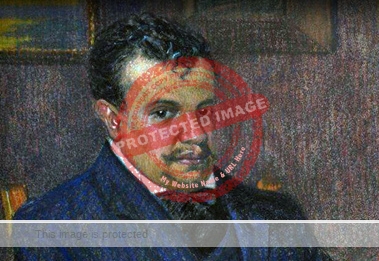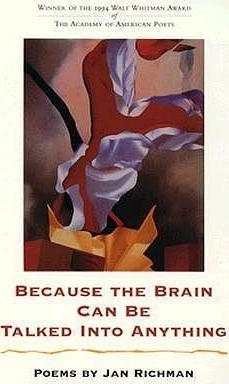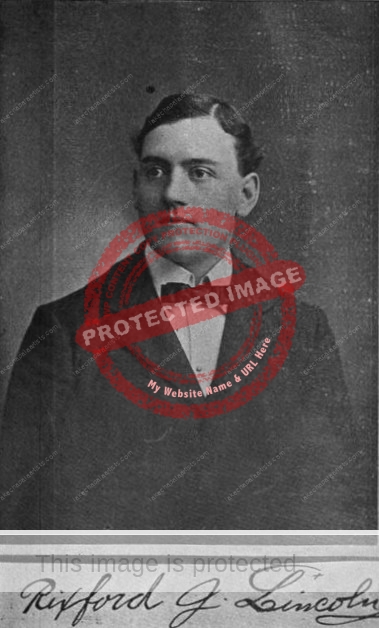Luis Gonzaga Urbina (1864-1934) began composing “El poema del lago” (“The Lake Poem”) (1907) on the shores of Lake Chapala, before completing it in Mexico City. The poem consists of 18 sonnets, each with its own particular direction and strength.

This is the full text of the poem, in Spanish:
El poema del lago
A Jesús E. Valenzuela
I
A UN ÁRBOL DEL CAMINO
¿Qué dice tu nervioso gesto de selva oscura
árbol vetusto y seco sin una verde rama?
Con cicatriz de hachazos y quemazón de llama,
como un espectro tiendes tu sombra en la llanura.
¿Qué dice, viejo inmóvil, tu fiera crispatura?
¡Tremendo y misterioso debe ser tu drama!
Parece que te encoges, y al cielo que te inflama
quieres lanzar tu grito de inmensa desventura.
Es trágico el profundo silencio de las cosas;
lo inanimado sufre dolencias pavorosas,
ignotos infortunios que no tienen consuelo;
porque la vida es toda crueldad, y es inconsciente,
porque es la tierra a todo dolor indiferente,
y es impasible y muda la inmensidad del cielo.
II
PAISAJE MATINAL
¡Qué soledad augusta! ¡Qué silencio tranquilo!
El lago, quieto, monorrítmicamente canta,
y sobre el sauce, cuyas frondas me dan asilo,
un pájaro su débil cancioncita levanta.
En las perladas linfas, como una red de hilo
de cristal blanco, tiende, la luz que se abrillanta
con las ondulaciones, su claridad. Y un filo
de sol, oculto en una nube que se adelanta,
rompe, sereno y frágil, las aguas a lo lejos.
En las violetas cumbres, tapices de reflejos
desgarran, al capricho, sus ocres bordaduras,
y una remota barca, despliega, puro y leve,
en el azul del aire, su triángulo de nieve,
que brilla bajo el hondo zafir de las alturas.
III
TARDE SERENA
Es un gran vidrio glauco, y es terso y transparente,
y copia, espejeante, la playa florecida,
con un matiz tan rico, tan claro, tan valiente,
que el agua da, a colores y a formas, nueva vida.
La sierra, al esfumino, se borra de allá enfrente,
como una nube incierta que al cielo va prendida,
y, voluptuosa y fresca, columpia la corriente
un haz de lirios muertos bajo la luz dormida.
El lago soñoliento no canta sotto voce;
no tiembla. Vive en una tranquilidad que asombra.
Presto vendrá el crepúsculo con su oriental derroche;
el lago, limpio y terso, como una verde alfombra,
espera a que lo agiten las alas de la noche,
o, en tempestad, lo encrespen las manos de la sombra.
IV
PRIMER INTERMEDIO ROMÁNTICO
A una amiga lejana
Es diáfano el crepúsculo. Parece
de joyante cristal. Abre en el cielo
su ágata luminosa, y es un velo
en que el azul del lago desfallece.
En ámbares cloróticos decrece
la luz del sol, y ya en el terciopelo
de la penumbra, como flor de hielo,
una pálida estrella se estremece.
Mientras las aves lentamente giran,
la sombra avanza que los oros merma,
y entre la cual las púrpuras expiran.
Yo dejo que mi espíritu se aduerma,
y me pongo a soñar en que me miran
tos ojos tristes de esmeralda enferma.
V
DÍA NUBLADO
El viento arruga y mueve pesadamente el lago
que se levanta en olas de oscura refulgencia.
El horizonte extiende su azul brumoso y vago,
lo mismo que las aguas su gris opalescencia.
Hay una nube inmóvil, con el perfil de un mago
medieval, en la cumbre de la montaña. Herencia
de la noche lluviosa, cual iracundo amago,
la nube mancha un cielo de suave transparencia.
Una mañana fría de opaco claroscuro.
El sol que las montañas pálidamente dora,
deja en el aire un tinte blanco, glacial y duro;
y un árbol viejo, en medio de la calma infinita,
al borde de la margen, sobre el agua sonora,
parece un triste anciano que en su dolor medita.
VI
MEDIODÍA
El agua está cual nunca de linda y de coqueta;
no hay rayo que no juegue, no hay ola que no salte;
de lejos, tiene rubios perfiles su silueta,
y azul es en la playa, con limpidez de esmalte.
Vestida está de fiesta: no hay joya que le falte;
las barcas, a su puesto, le dejan una inquieta
cinta de plata virgen, para que así resalte
la luz en el radioso brocado de violeta.
Cerca, en el promontorio de musgos y basaltos,
un gran plumón de nubes se tiende y busca asilo;
al fondo, van las cumbre, en los celajes altos,
rompiendo el horizonte con su cortante filo,
y en el confín que esplende, se funden los cobaltos
del cielo y las montañas, en un zafir tranquilo.
VII
EL BAÑO DEL CENTAURO
Chasquea el agua y salta el cristal hecho astillas,
y él se hunde; y sólo flotan, del potro encabritado
la escultural cabeza de crines amarillas
y el torso del jinete, moreno y musculado.
Remuévense las ondas mordiendo las orillas,
con estremecimiento convulso y agitado,
y el animal y el hombre comienzan un airado
combate, en actitudes heroicas y sencillas.
Una risueña ninfa de carne roja y dura,
cabello lacio y rostro primitivo, se baña;
las aguas, como un cíngulo, le ciñen la cintura;
y ella ve sin pudores… y le palpita el seno
con el afán de darse, voluptuosa y huraña,
a las rudas caricias del centauro moreno.
VIII
EL BUEY
Uncido a la carreta, va el buey grave y austero;
y su ojo reproduce no el campo verde, como
lo vio Carducci, sino la inmensidad de plomo
del lago que finge una gran lámina de acero.
La arena de la playa le sirve de sendero,
y el sol, que está en lo alto del infinito domo,
unta sus resplandores en el sedeño lomo
y clava su aureola sobre el testuz severo.
El animal camina con majestad estoica,
y ante la fuerza plástica de su figura heroica,
despiértase un recuerdo clásicamente ambiguo;
que, a las evocaciones, es el buey melancólico,
en la hoja de papirus hexámetro bucólico,
y en el frontón del templo bajorrelieve antiguo.
IX
SEGUNDO INTERMEDIO ROMÁNTICO
A una onda
Arrulla con tus líricas canciones,
onda terca que vienes de tan lejos
enjoyada de luces y reflejos,
arrulla mis postreras ilusiones.
La juventud se va; se van sus dones;
del placer quedan los amargos dejos,
de la pasión los desencantos viejos,
y del dolor las tristes emociones.
Queda la vida, que el instinto afianza,
queda el recuerdo del amor perdido,
y queda el ideal que no se alcanza.
Tú, que cantando sueños has venido,
onda lírica, dame la esperanza,
y si no puede ser… dame el olvido.
X
PAISAJE SIN FIGURAS
El saúz es audaz; dejó la orilla
y avanzó en la corriente que chispea
y en derredor del tronco cabrillea
bajo la luz del sol que tiembla y brilla.
Ligeramente impura y amarilla,
en el borde arenoso el agua ondea,
y en la remota extremidad clarea
con blancura de nieve sin mancilla.
El árbol, que se empapa en luces blondas,
deja caer, sensual y perezoso,
la móvil cabellera de sus frondas,
y en el augusto y plácido reposo,
sobre el trémulo raso de las ondas
vuelca su verde limpio y luminoso.
XI
LA HORA MÍSTICA
Se enciende el oleaje, como a la luz se enciende
la leche de los ópalos, en fuegos repentinos;
y la onda turbia lumbres metálicas desprende
si en su volar la rozan los pájaros marinos.
El sol, en desmayadas claridades desciende,
y empapa el horizonte de tonos ambarinos,
rompe con lanzas de oro los cúmulos y prende
rubíes, de las velas en los flotantes linos.
Es la hora letárgica de la melancolía;
todo está mudo y triste. Ya va a apagarse el día;
dilúyese en la sombra cuando en la tierra alumbra.
Sólo en la humilde iglesia, refugio de oraciones,
lucen, como dos puntos rojizos y temblones,
las llamas de dos cirios que pican la penumbra.
XII
NOCHE CLARA
Blanco de ensueño; blanco de los polares días,
blanco que fosforece, que las linfas estaña;
blanco en que se deshace la sobra en una extraña
niebla azul y profunda que borra lejanías.
La ondulación es lenta, rayada con estrías
de luz — maravillosa e inmensa telaraña,
cuyo tejido frágil se rompe cuando baña
al ramo, la corriente de mudas ondas frías.
Entonces ¡qué prodigio! ya el remo se mueve
sobre el lago salpica gotas de plata y nieve,
que marcan de los botes los caprichosos giros,
hasta que al fin se pierden con su movible estela
en la remota bruma —la azul y blanca tela
que es polvo de diamantes en humo de zafiros.
XIII
PUESTA DE SOL
Y fueron en la tarde las claras agonías:
el sol, un gran escudo de bronce repujado,
hundiéndose en los frisos del colosal nublado,
dio formas y relieves a raras fantasías.
Mas de improviso, el orto lanzó de sus umbrías
fuertes y cenicientas masas, un haz dorado;
y el cielo, en un instante vivo y diafanizado,
se abrió en un prodigioso florón de pedrerías.
Los lilas del ocaso se tornan oro mate;
pero aún conserva el agua su policroma veste:
sutiles gasas cremas en brocatel granate.
Hay una gran ternura recóndita y agreste;
y el lago, estremecido como una entraña, late
bajo el azul caricia del esplendor celeste.
XIV
TERCER INTERMEDIO ROMÁNTICO
Vidas inútiles
Salpicadas de aljófares las sensuales corolas,
se abren, urnas de seda, bajo el claro del día;
los lirios y nenúfares, son lotos y amapolas
que a flor de agua, en la margen, van sobre la onda fría.
Es un jardín flotante… ¡Ah! yo me inclinaría,
yo hundiera mis dos manos en las crujientes olas,
para cortar un cáliz… Pero es que vivo a solas,
no hay alma que me espere ni a quien le nombre mía.
Loto que yo arrancara, porque lleno de unciones
durmiera entre las hojas de un libro de oraciones,
púdrete a flor de agua… ¡Qué igual es nuestra suerte!
Yo floto en mi tristeza, que es honda y que no brilla,
en tanto que los vientos me arrancan de la orilla
con rumbo a las oscuras riberas de la muerte.
XV
LUCES Y CARNES
Rayos de sol en plenitud esmaltan
el gris del lago, en claridades blondas,
y son insectos de cristal que saltan
sobre la turbia seda de las ondas.
En las vecinas márgenes exaltan
el verdor enfermizo de las frondas,
y de la sierra en el confín, cobaltan
las lejanías. Junto a las redondas
redes que están al sol, desnudo juegan
y a sus retozos cándidos se entregan,
dos niños en la arena de la orilla,
y la luz, de doradas palideces,
en aquellas oscuras desnudeces,
con maternales complacencias, brilla.
XVI
EL TRIUNFO DEL AZUL
El rosicler ardiente de la mañana, pinta
el lago de una pálida sangre de rosas. Quietas
está las aguas, donde como una frágil cinta
la luz ondula y abre sus caprichosas grietas
de plata. Y, a lo lejos, en carmesí se entinta
el cielo en que las cumbres recortan sus siluetas;
las púrpuras se funden en vahos violetas
y queda al fin del rojo, la claridad extinta.
Triunfa el azul en gloria; triunfa el azul tramado
de argentos y de oros, y como imperial brocado;
es el azul profundo que baña de luz pura
el promontorio rígido y el lago que se enarca;
y sólo, en lo distante, la vela de una barca
pone su dulce nota de virginal blancura.
XVII
VOCES EN LA SOMBRA
En el silencio triste de la noche que empieza,
se oye una voz que viene de lejos, de una mancha
distinta en las penumbras solemnes de una lancha
que sobre el horizonte su mástil endereza.
Bronca es la voz, de un timbre de salvaje fiereza;
mas al cruzar del lago por la sonora plancha,
yo no sé en qué misterios musicales, ensancha
la canción, su doliente y adorable tristeza.
Solloza humanos duelos la popular y ruda
canción y los desgrana sobre la noche muda…
son del dolor perenne, los viejos estribillos.
Un alma primitiva cantando está un tormento;
y es una voz que lleva por acompañamiento
el diálogo estridente de los insomnes grillos.
XVIII
ENVÍOS
A ti, viejo poeta, con quien crucé yo un día,
gozoso e impaciente, los lagos del ensueño;
tú eras robusto y grande, yo débil y pequeño,
mas tu barca de oro dio asilo a mi alegría.
Tu juventud ilusa fue hermana de la mía;
tu empeño, noble y alto, fue amigo de mi empeño;
hoy que es fronda de otoño nuestro brote abrileño,
tu pena es camarada de mi melancolía.
A ti va mi poema, vivido frente a frente
del agua y de los cielos, en una hora clemente
pasada en el regazo de la naturaleza.
Va a despertar, si puede, dormidas añoranzas;
y reencender, si sabe, rescoldos de esperanzas,
y a divertir con sueños tu plácida tristeza.
Source
Comments, corrections or additional material related to any of the writers and artists featured in our series of mini-bios are welcome. Please use the comments feature at the bottom of individual posts, or email us.
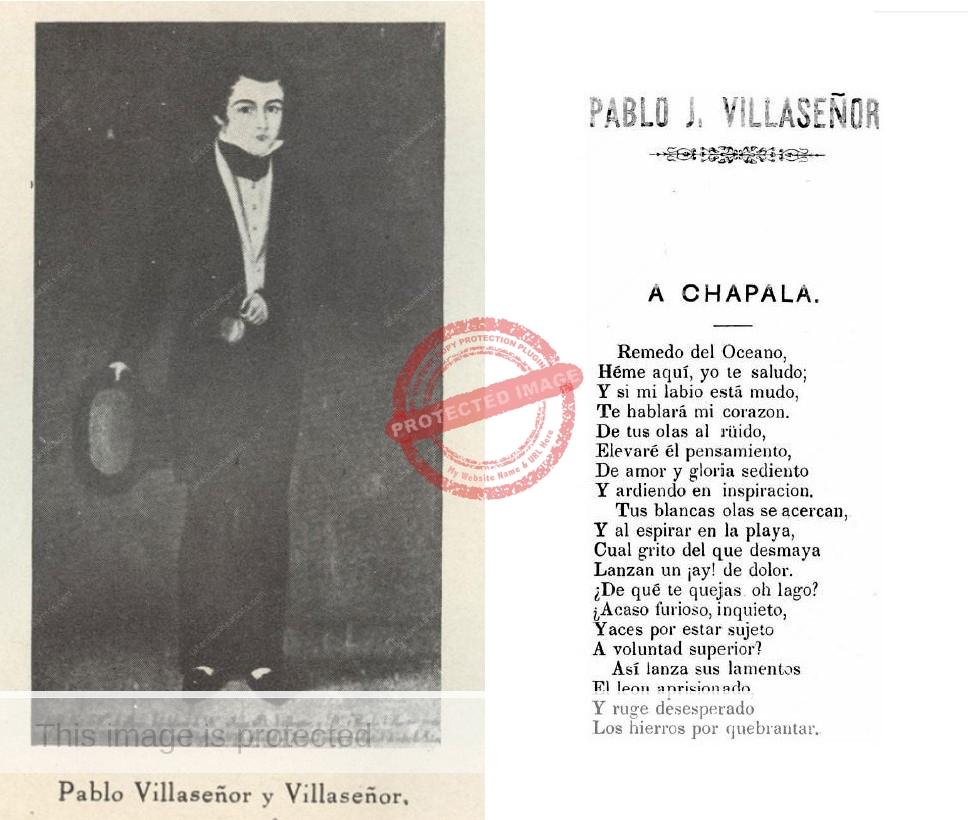

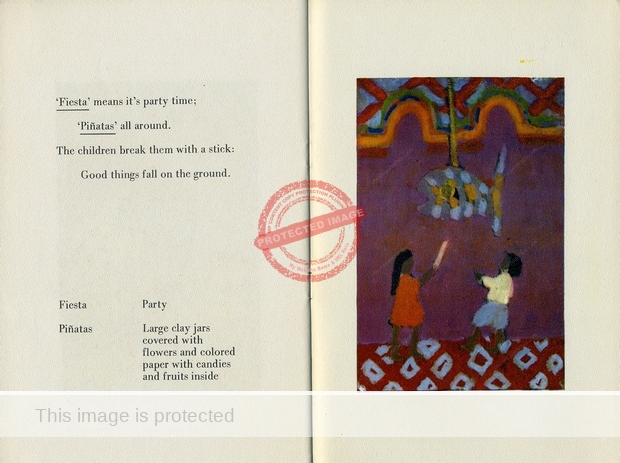
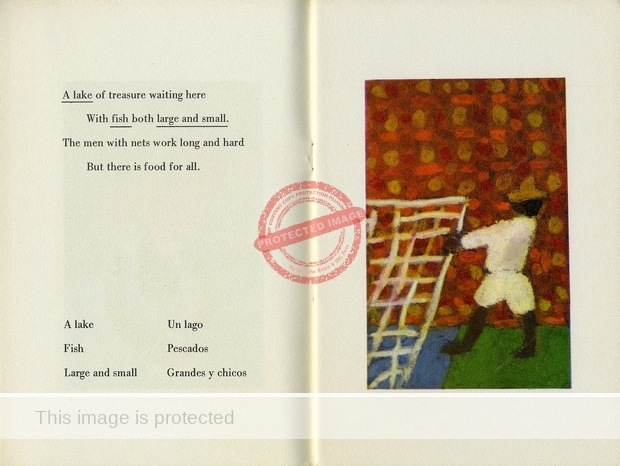
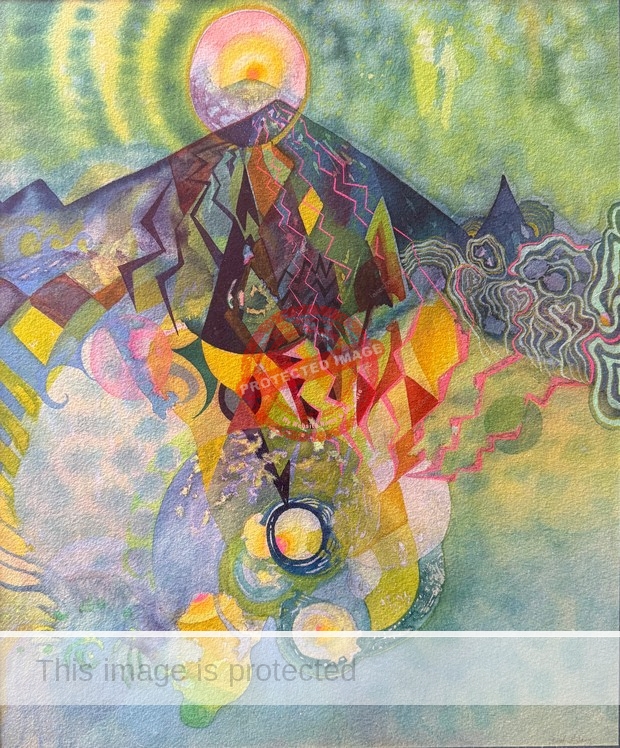

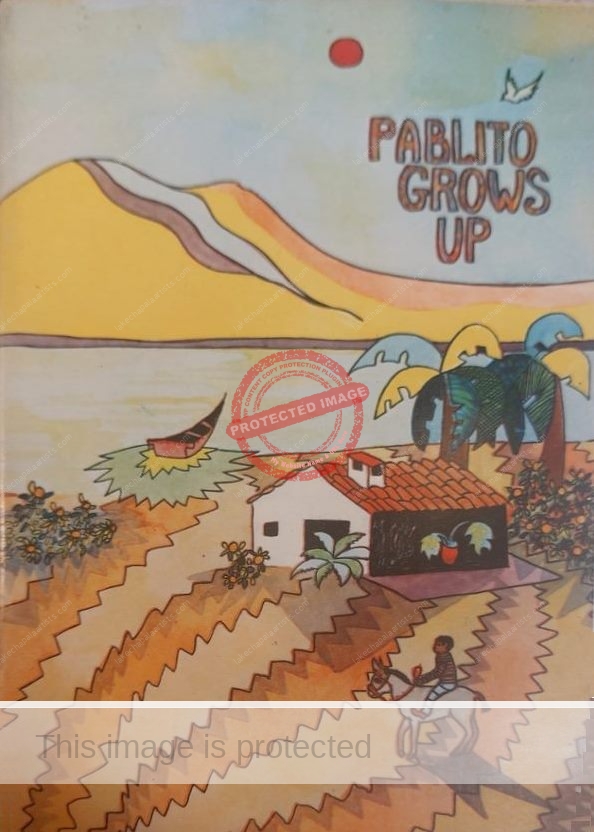
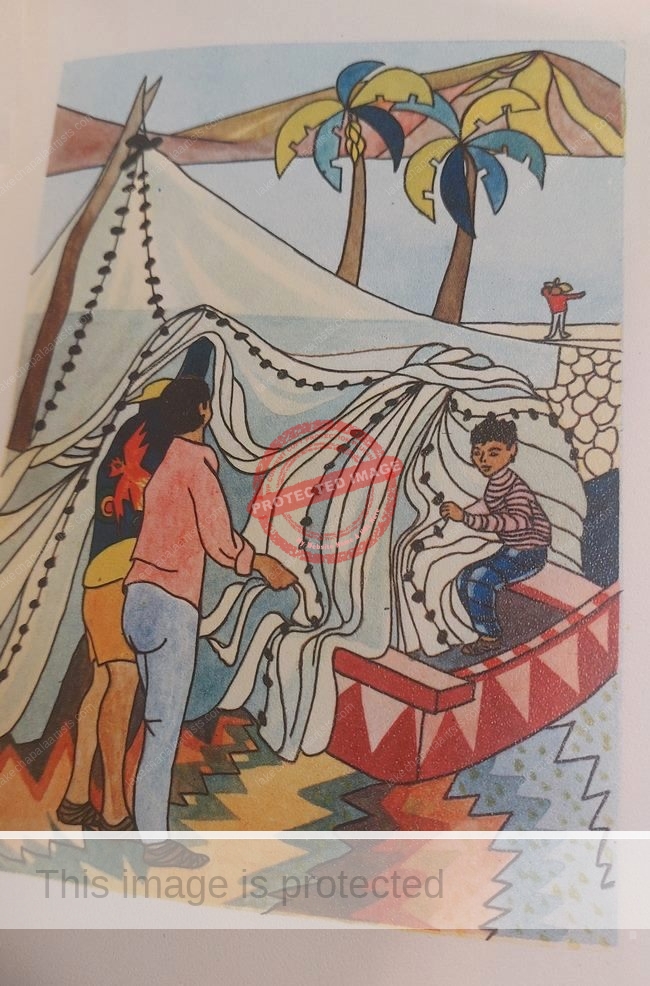
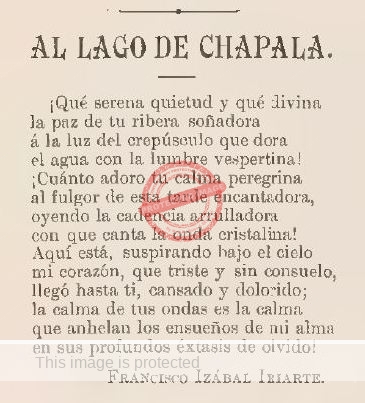 Izábal, who never married, was exceptionally well connected and a member of numerous civic and political committees and groups. He was a prominent leader of the Sinaloan community in Guadalajara, and led fund-raising efforts whenever his native state suffered from storms, disease or earthquakes. In 1897, he was one of the small group accompanying General Cañedo, then Governor of Sinaloa, on a business trip to Mexico City.
Izábal, who never married, was exceptionally well connected and a member of numerous civic and political committees and groups. He was a prominent leader of the Sinaloan community in Guadalajara, and led fund-raising efforts whenever his native state suffered from storms, disease or earthquakes. In 1897, he was one of the small group accompanying General Cañedo, then Governor of Sinaloa, on a business trip to Mexico City.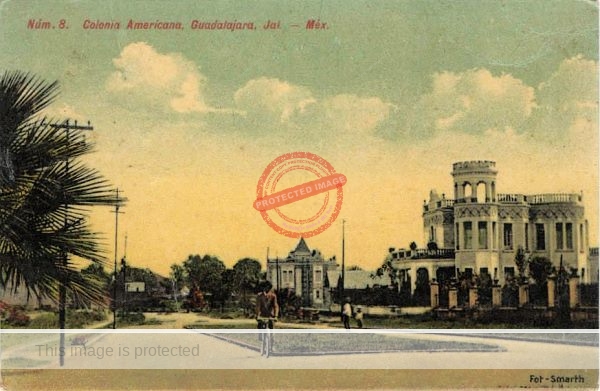
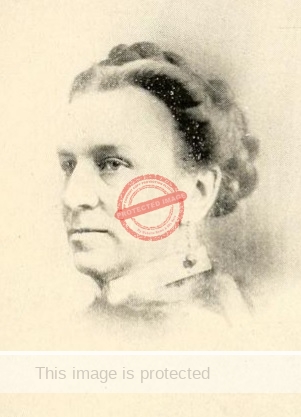
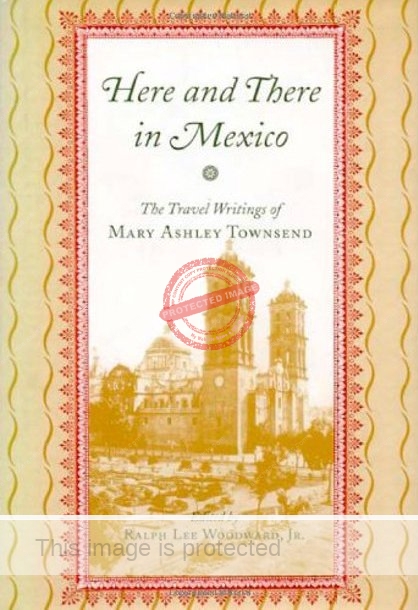 In “Lake Chapala,” Mary Ashley Townsend, looking across the waters of the lake from her stately residence, Villa Montecarlo, indulged her imagination and poetic talents.
In “Lake Chapala,” Mary Ashley Townsend, looking across the waters of the lake from her stately residence, Villa Montecarlo, indulged her imagination and poetic talents.